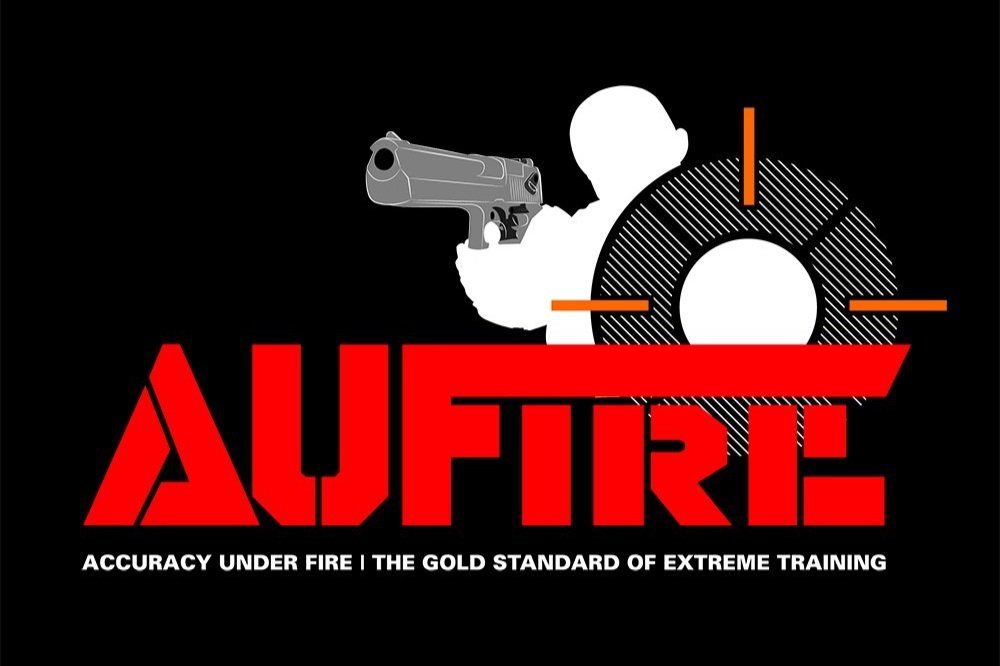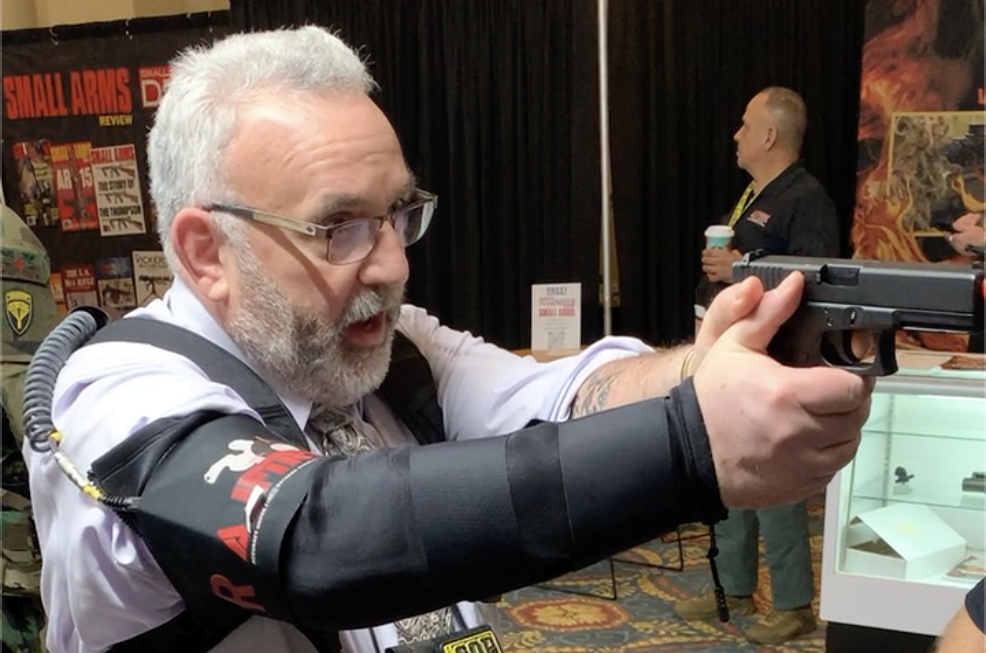Skills and Mindset — The AUFIRE Trainer
This article was originally posted on American COP Magazine | By Erick Gelhaus
Just before SHOT, a buddy with the LAPD’s Metropolitan Division told me I needed to check out the AUFIRE training system and then see it. AUFIRE is short for Actions Under Fire. I’m very glad I listened to him.
In the SO Tech booth, I met with the developer, Tim Pierce, a retired LAPD officer, and a rep – Jim Grady – who had been the sergeant in the Tactics and Survival section of the Los Angeles Sheriff’s Department.
The system was born from tragedy; a robbery suspect shot an officer, paralyzing her from the second thoracic vertebrae down. That story is Pierce’s to tell, not mine. In the aftermath, he was exposed to an electronic muscle stimulation (e-stim) device, and his efforts went from there.
After starting with just the e-stim pads and wires, he enlisted the assistance of freelance clothing and outdoor gear designers. Those efforts led to its current form.
The system consists of a camelback-like harness with a receiver, wired full-length sleeves and leggings, and a remote control. The remote control can select between two different frequencies and four different harnesses, allowing for more training opportunities. The full sleeves did not interfere with any movements or the use of my arms.
Please do not conduct live fire with this system. AUFIRE strongly advises against using it with live ammunition. Even if they did not, I would limit the AUFIRE’s use to the non-lethal training ammunition (NLTA) environment – meaning UTM man-marking rounds, Sims FX rounds, the force-on-force product line, or airsoft.
I would still teach disability shooting and manipulation techniques in a crawl, walk, then run method. The crawl and walk would be with racquet balls and tape. AUFIRE is the run part; you can easily test whether your students got it. It also teaches resilience by distracting and disabling you before forcing you to work through the distraction and “injury” to solve the problem. That’s better than crumpling to the floor and quitting.
So, how does it work? When the remote-control box is triggered, it sends a signal to one harness, addressing one limb above or below the joint, targeting the inside or outside of the limb. The setting, one through four, determines how intense your response will be. It can go from being a distraction to disabling. Where it hits you determines what capabilities you still have. For example, if the inside of my forearm was targeted, my fist contracted, and that’s all I could use; however, if the outside was targeted, my hand bent out, and I lost the use of my ring and pinky fingers. But I could still use my thumb, index, and middle fingers. That let me run the slide and perform a reload.
Fortunately, I had trained on disability shooting with both my strong and weak hands. That meant the mechanics were not that difficult. The machine’s benefit was the initial distraction and delay caused by processing and responding to the wound. As I spent time with it, that delay was markedly reduced. My friend and fellow trainer John Hearne notes our brains dislike novel (or new, unknown) stimuli. AUFIRE helps do away with that.
One day Pierce got a call to come to a training facility in the LA area. A foreign national-level tactical team was training there, and those running the training thought they’d benefit from the AUFIRE. Their team leader was wired up, and the team entered the scenario. When it was activated, and the team leader went down, the team turned their attention to him rather than ending the threat – until they realized they were still being shot. The system trains more than the officer wearing it.
Metro
Don’t take my word or that of the developer; here are the thoughts of my buddy, James:
For far too long, police officers have been wrongly conditioned to respond to being shot by falling to the ground and giving up.
Instructor: Taps officer on the shoulder, “You’re shot in the leg.”
Officer: Immediately falls to the ground and waits for officers to rescue him or apply medical aid.
The AUFIRE is the right tool to correct that response.
The pain of being hit with a sim round is no comparison to the pain I felt with the AUFIRE. It totally immobilized my arm. Even though it was painful, I could still return fire, move to a safe location, and get myself out of the problem. You learn to power through the pain.
Pierce told me that multiple four-officer kits had been bought by elements within the LAPD (Metro, the academy, and multiple field divisions) and LASD. The complete four-officer kit goes for about $12,000. There is also a 2-officer, or A-Car, kit. While a decent-sized agency should be able to afford it, a group of smaller departments could easily buy it for regional use.
Final Thought
While I regularly find equipment I like, I rarely see something you must buy. Especially specific products for an agency. AUFIRE does fall into the must buy category. If your department can afford a two or four-officer kit, buy it, and get it into your training. If the funds are not there, partner with other agencies and buy AUFIRE, then share it.









